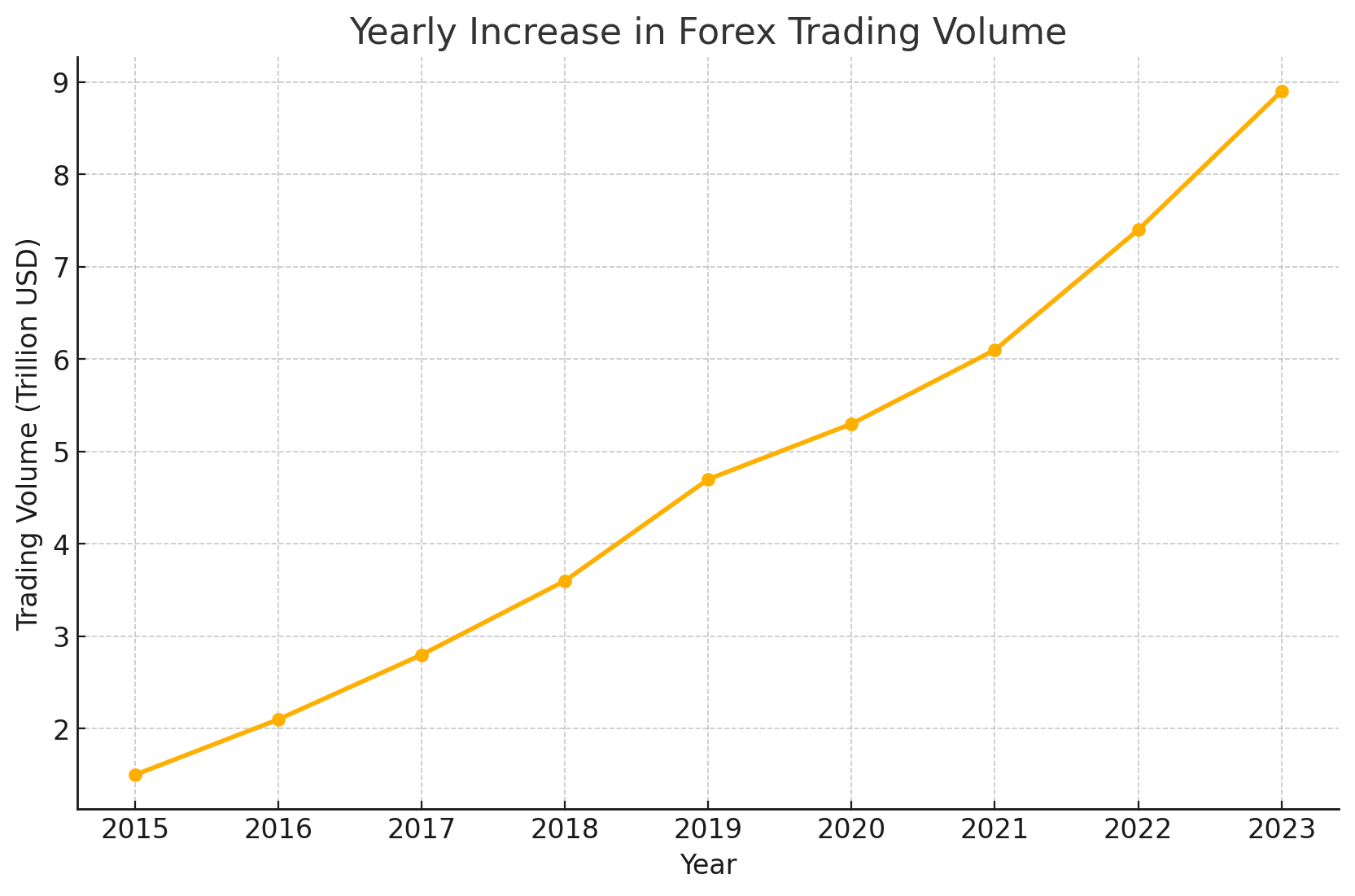The world of Forex trading is exciting and full of opportunities to profit from currency fluctuations. Imagine a massive financial market with over $8 trillion circulating daily! Traders from all over the globe participate, making Forex the largest financial market in the world, even larger than the stock market.

In the past, Forex trading might have seemed inaccessible, but today, anyone with internet access and a smartphone can start trading currency pairs like USD/JPY (US Dollar/Japanese Yen) or XAU/USD (Gold/US Dollar). However, Forex trading isn't as simple as it might seem. There are numerous terminologies like Pip, Lot, Leverage, EUR/USD, and even Indices or Commodities that can feel overwhelming for beginners.
Don't worry! This article will help you understand the basics of Forex trading step by step. We’ll cover everything from choosing a broker, placing your first order, and planning strategies to risk management, ensuring you can start trading Forex confidently and safely.
What is Forex or FX Trading?
Forex (FX) stands for Foreign Exchange, which refers to the buying and selling of foreign currencies. It involves purchasing one currency and selling another in an attempt to profit from the exchange rate fluctuations. For instance, if you run a business importing goods from Japan, you’ll need Japanese Yen to purchase those goods. However, the exchange rate between the Yen and your local currency isn’t fixed; it fluctuates constantly. This is where Forex trading comes in—traders aim to profit from these fluctuations by buying a currency when its value is low and selling it when its value increases.
Initially, Forex trading involved actual currency exchanges for trade and commerce. Over time, financial products were developed to make the process more accessible. For example, in many countries, including Thailand, laws restrict retail investors from direct currency speculation. This has led to the rise of financial instruments like Contracts for Difference (CFDs), which allow traders to speculate on price movements of currencies, stocks, indices, and commodities without owning the actual assets.
CFDs in Forex Trading
When people talk about trading Forex online, they’re often trading CFDs rather than actual currencies.
How CFDs Work:
- You enter a contract with a CFD broker to exchange the price difference of an asset from the time you open the contract to the time you close it.
- If the asset’s price moves in your favor, you profit.
- If the asset’s price moves against you, you incur a loss.
-
Example:
Suppose you expect Apple’s stock price to rise. You buy a CFD for Apple shares at $150.
- If the price rises to $160, you earn $10 per CFD. But if the price drops to $140, you lose $10 per CFD.
Although it’s common to refer to these activities as Forex trading, technically, they are CFD trades. However, using the term Forex is acceptable since it’s widely recognized and understood in this context.
Why Do People Trade Forex?
- Profit in Both Rising and Falling Markets: You can make money by going long (buying) in a rising market or short (selling) in a falling market.
- Leverage: Forex allows you to control larger positions with smaller investments, increasing potential profits (and risks).
- Access to Diverse Markets: Trade currencies, commodities, indices, and stocks all within one account.
- Low Costs: Forex trading generally has lower commissions compared to traditional asset trading.
- 24/5 Market: Forex operates 24 hours a day, 5 days a week, allowing flexibility for traders worldwide.
- No Ownership of Assets: You speculate on price changes without needing to own the underlying assets.
Steps to Start Forex Trading
- Open an Account with a Broker: Choose a reliable broker. Check out our guide on how to choose a Forex broker.
- Practice with a Demo Account: Use a demo account to familiarize yourself with trading platforms like MetaTrader 4 (MT4) or MetaTrader 5 (MT5) before trading with real money. For a glossary of Forex terms, visit Forex and MetaTrader Terminology.
- Plan Your Risk Management Strategy: Before trading, decide how much you are willing to risk per trade. Learn more about risk management here.
- Develop a Trading Strategy: Decide whether to use technical analysis, fundamental analysis, or a combination. Choose a strategy that aligns with your trading style and risk tolerance.
- Stay Updated: Monitor economic news and geopolitical events that could impact the market, and adjust your strategy accordingly.
-
Try Trading: If you are unsure, start with a demo account that simulates real trading conditions. Once you’re confident, consider transitioning to live trading. Try a demo here: Demo Trade Forex. Ready to trade live? Sign up for Forex Trading and Get Bonuses. Alternatively, Sign up with a Broker and Get $30 Free.
Forex Trading Charts
- Line Chart: The simplest type, connecting closing prices over time, useful for identifying trends.
- Bar Chart: Displays the open, high, low, and close prices for a specific period, providing more detailed market data.
- Candlestick Chart: The most popular type, showing the same data as bar charts but in a visually intuitive format. Candlestick patterns help traders predict market trends.
These charts are essential tools for technical analysis, enabling traders to understand market trends and price movements effectively.

 English
English
 Thai
Thai
 Vietnamese
Vietnamese
 Arabic
Arabic
 Hindi
Hindi
 Indonesian
Indonesian